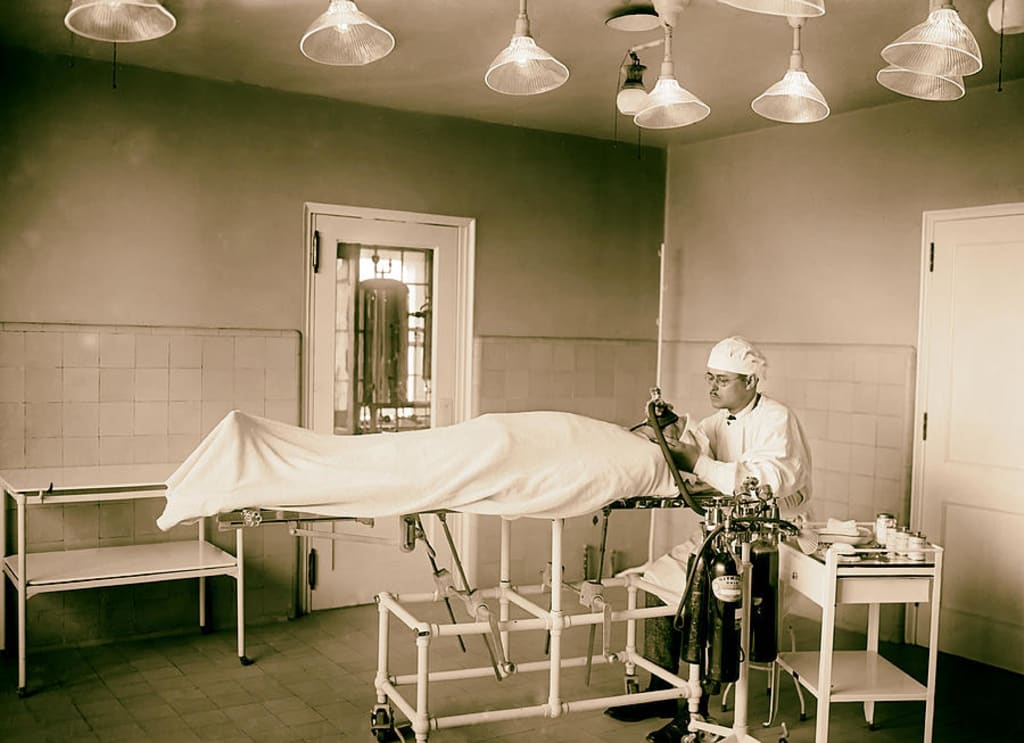The Evolution of Surgical Anesthesia
Tracing the Historical Journey of Anesthetic Innovation and Its Impact on Medical Practice

With medical students taking charge of patient restraint and bystanders anxiously awaiting, Scottish surgeon Robert Liston positioned himself ready to commence. With swift precision, he incised the patient’s flesh, meticulously sawing through their flesh and bone. In a matter of minutes, the amputation was successfully executed.
This took place during the 1830s, and Liston's reputation was built on his remarkable surgical speed. This attribute was particularly significant since, in an era before the widespread use of anesthesia, patients had to bear full consciousness throughout surgical procedures. The pursuit of anesthetics capable of inducing unconsciousness and enabling more intricate surgeries began long before Liston's time.
Around the year 200 CE, Chinese physician Hua Tuo documented the mixture of alcohol with a powdered blend of various substances to anesthetize patients. Similarly, in the 13th century, Arab surgeon Ibn al-Quff mentioned patients being anesthetized, likely through the inhalation of substances like cannabis, opium, and mandrake, delivered via saturated sponges.
As the 1700s neared their end, numerous scientists started exploring the potential medical applications of chemistry. This exploration led to significant advancements in anesthesia involving three key contenders: nitrous oxide, ether, and chloroform.
In 1799, English chemist Humphry Davy initiated experiments with nitrous oxide, commonly known as laughing gas. He personally inhaled it as well as observing its effects on friends. Davy speculated that its pain-relieving properties could prove beneficial for surgical interventions, although its practical application in surgeries would take several decades to materialize. This delay was partly due to skepticism among some surgeons and patients regarding the effectiveness and safety of anesthetic agents.
In 1804, Japanese surgeon Seishū Hanaoka successfully conducted a surgery to remove a breast tumor from a patient who was anesthetized using a mixture of medicinal herbs. However, this achievement remained largely confined to Japan.
Ether eventually began to gain medical recognition. Initially formulated centuries earlier, it was initially used recreationally. During the "ether frolics" of the early 1800s, an American physician noticed the painlessness of a fall he experienced while under ether's influence. In 1842, he administered ether to a patient, successfully removing a tumor from the patient's neck. During this period, dentists began to appreciate the potential of nitrous oxide.
However, a setback occurred in 1845 when an American dentist attempted a public tooth extraction on a patient anesthetized with nitrous oxide, leading to the patient's scream. This incident was likely due to an insufficient dosage, but it had negative implications for the drug's reputation. In the meantime, ether continued to be refined for dental procedures. In October 1846, an American dentist administered ether to a patient, allowing a surgeon to remove a neck tumor.
Two months later, Liston himself conducted an upper leg amputation on an ether-administered patient, who regained consciousness shortly after the procedure and inquired about its commencement. Success stories involving ether followed from various regions, including India and Russia. Nevertheless, ether was associated with drawbacks and uncomfortable side effects.
Scottish obstetrician James Simpson learned about an alternative anesthetic called chloroform in 1847. Together with two colleagues, he experimented with it and promptly lost consciousness. Simpson then administered chloroform to a childbirth patient, and its rapid onset of action contributed to its popularity. Despite initial beliefs of being side-effect-free, it's now known that chloroform is harmful and potentially carcinogenic.
Given the incomplete understanding of anesthetics during that era, unintended fatal consequences sometimes resulted. Furthermore, some doctors held prejudiced views that influenced the extent of anesthesia they deemed appropriate, if any. American obstetrician Charles Meigs, for instance, argued that the pain of childbirth was a form of divine suffering and questioned whether medical intervention should interfere.
Throughout the 1840s, American physician James Marion Sims performed experimental gynecological surgeries on enslaved Black women without the provision of pain relief. As the late 19th century approached, those with access to anesthetics were able to undergo increasingly complex procedures that were previously deemed impossible. Chloroform's risks and toxicity became apparent, leading to its decline in popularity by the early 1900s.
Ether and nitrous oxide, alongside newer agents, are still employed today. However, these substances are used in modified formulations that prioritize safety and minimize side effects, with vigilant monitoring of the patient's condition. Thanks to these advancements, speed is no longer the paramount concern, and surgery can be a far less agonizing experience.





Comments
There are no comments for this story
Be the first to respond and start the conversation.